Make the Most of Your New Obsessive Running Habit
With these seven exercises to improve your running technique.
As the weather gets nicer and we get more sick of being cooped up inside our homes, many people are turning towards running for their daily exercise and stress relief. Whether you’re a newbie or a seasoned runner, it’s important to practice strength training and flexibility in order to improve your running technique, power, and speed.
To help you improve your running strength, we spoke to Louis Serafini, of Tracksmith, who shared these exercises to benefit your core, strength, and flexibility. All of these exercises can be done without equipment.
Core Exercises
A strong core helps set a solid foundation for the body. It can improve your running posture and keep your hips, lower back, and pelvis moving in one fluid motion. These exercises will help strengthen your core and improve stabilization.
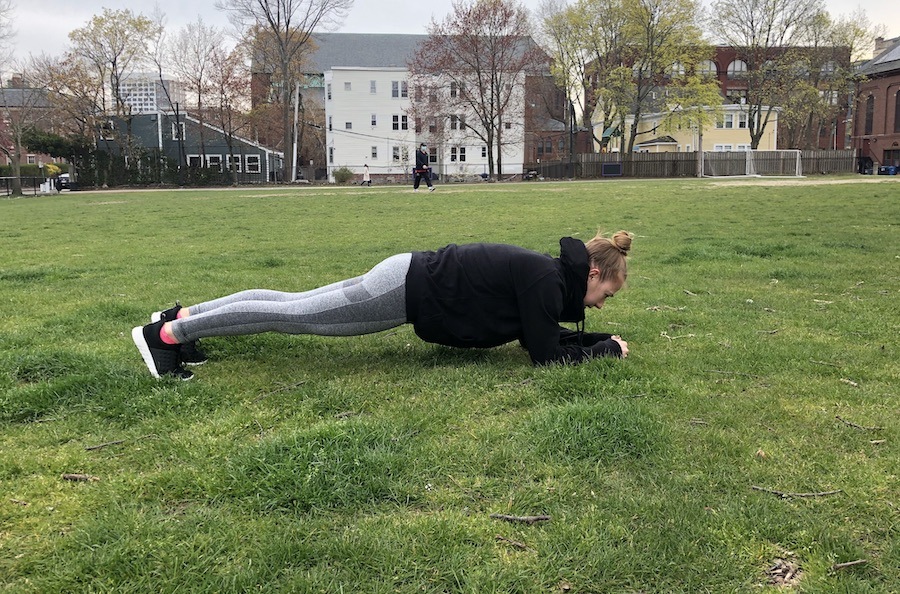
Photo credit Vita Lampietti
Plank
This move is a great beginner move, Serafini says, because it “requires little motion and you can do them even when you’re not motivated.” To begin, plant your hands or elbows directly under your shoulders (slightly wider than shoulder width). Ground your toes into the floor and straighten your back. Engage your core by focusing on pulling your navel towards your spine.
Start off with short intervals, around 30 seconds, and gradually work your way up to longer ones. If you’re looking for more of a challenge, you can try lifting one hand off the ground or one foot to engage different parts of your core.

Photo credit Vita Lampietti
Russian Twist
Serafini recommends using a weight in this move, but if you don’t have one at home, try holding a textbook, or another heavy household item. If you have no weight or heavy object, just clasp your hands together. Sit on the floor with your legs off the ground (forming a V with your upper body and legs). Holding the weight over your midsection, rotate the weight towards your right hip and back over to your left hip. Focus on engaging your core.
Strength Exercises
Strength training is essential for runners because it can help prevent muscle injury and it improves speed through neuromuscular coordination and power. Upper body exercises may not seem important for running, but since you use your arms when you run, strengthening them can improve your arm drive. As far as lower body conditioning goes, the stronger your legs, the further you’ll be able to propel yourself while running.
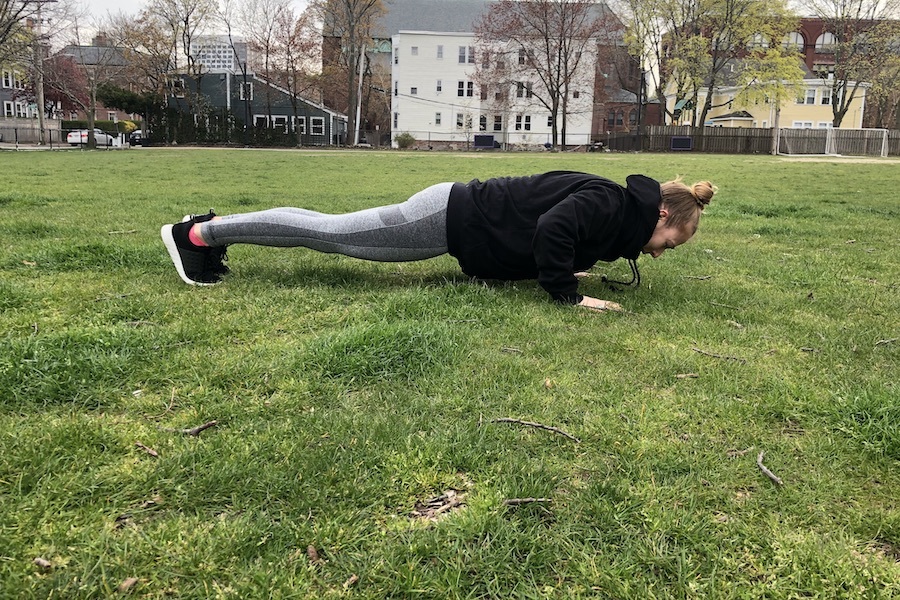
Photo credit Vita Lampietti
Push-ups
This simple move engages multiple muscle groups, such as your arms, chest and core. Start in the same position as a plank and bend your elbows to move your body down to the ground. Keep your elbows tucked in, back straight, and core engaged. When your chest is a few inches off the ground, push back up to your original position. Serafini suggests doing these in sets that are comfortable for you and your experience level.
If you need a modification, you can keep your knees bent on the ground. If you’re ready for a more advanced version, make a diamond with your hands for extra emphasis on your triceps or take your hands wider than shoulder width. This is a great video from Boston-based strength coach Tony Gentilcore on proper push-up form.

Photo credit Vita Lampietti
Wall Sits
This lower body exercise can be done anywhere. Start with your back flat against the wall. Your feet should be about shoulder-width apart and placed a couple feet from the wall. Slide your back down the wall, bending your legs until they’re at a 90 degree angle. Hold this position—you should feel the burn in your quads.
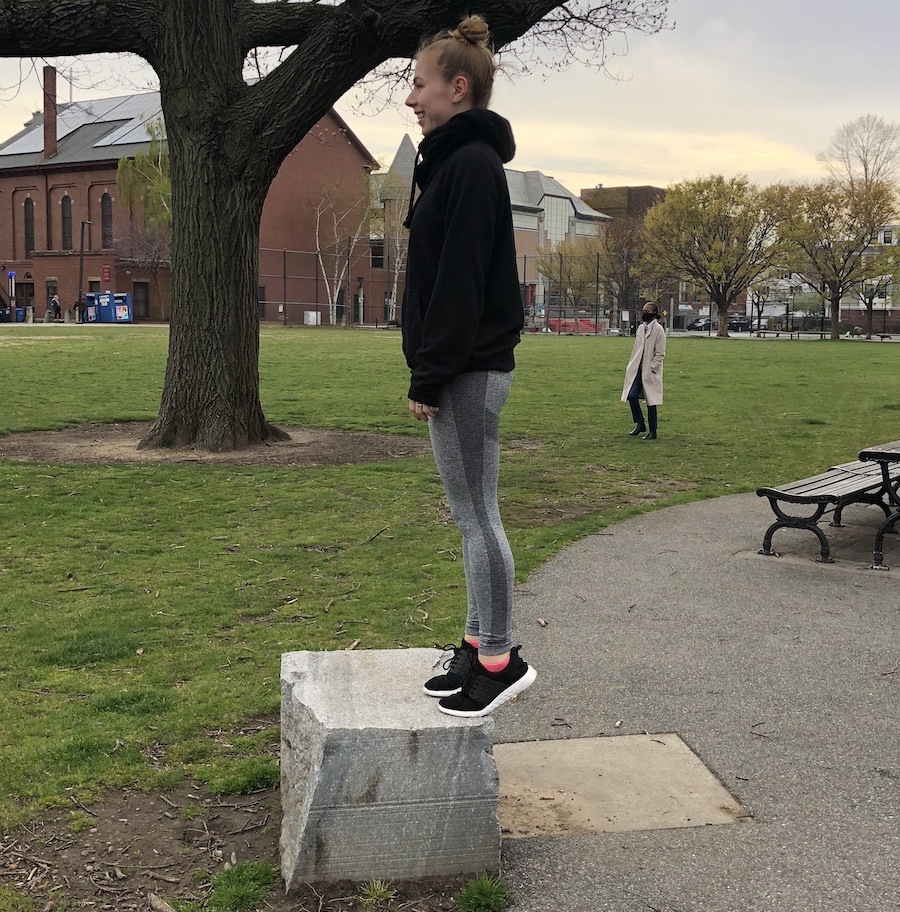
Photo credit Vita Lampietti
Calf Raises
For this exercise, all you need is a staircase or raised platform like this stone in the park. Put your feet halfway onto a step (with your heels hanging off) and use the railing or wall to guide you, but don’t put your weight on it. Let your heels drop down towards the ground and then push back up onto your toes.
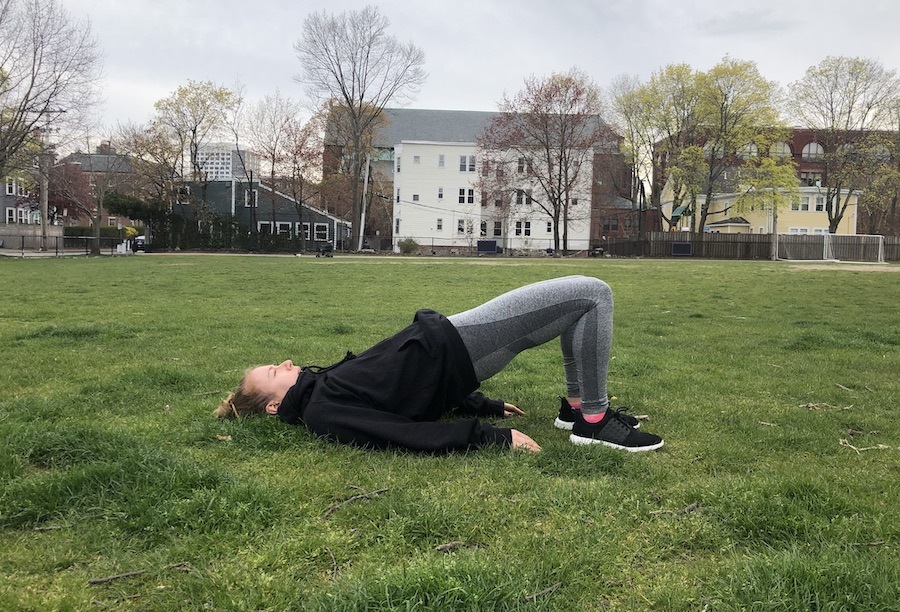
Photo credit Vita Lampietti
Glute Bridge
Start by lying on the floor with your knees bent and feet flat on the ground. Keep your arms at your side with your palms down. Lift your hips off the ground by squeezing your glutes until your knees, hips, and shoulders are all in line. Hold the position at the top for a couple of seconds and then ease back down.
For an added challenge, place a weight at the top of your thighs or add a resistance band just above your knees.
Flexibility Exercise
Flexibility is key for runners because it can reduce the chance for injury and provide a better range of motion.
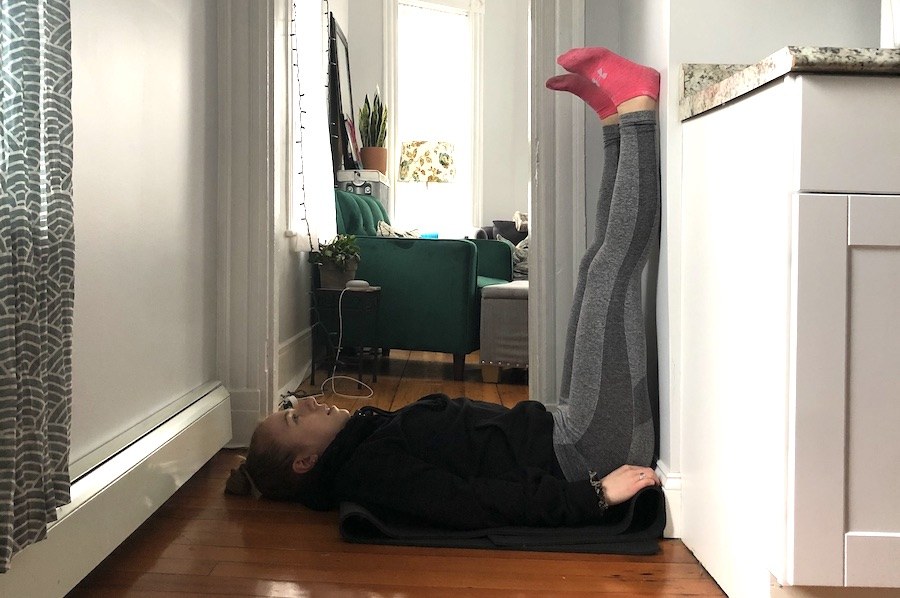
Photo credit Vita Lampietti
Leg Hangs
Serafini suggests leg hangs as a recovery move after a run or core circuit. This move helps drain the lactic acid from your legs and also provides a good hamstring or hip stretch. Lactic acid is the byproduct of intense exercise in the body, and it’s what makes you feel sore.
Get something soft to lay on like a blanket, pillow, or yoga mat. Find an empty wall and lay on your back with your legs up on the wall. Flex them straight to feel a stretch in your hamstrings. Spread your legs apart to form a V and lean to the left or right to isolate a hamstring. Bend your knees and pull your feet down on the wall to feel the stretch in your groin or hips.
Sample Workout
Ready to try them all out? Serafina prepped a sample routine for us that incorporates these exercises and stretches. The routine is only about 15 minutes long, and can be done once for a light workout or repeated two to three times for a more intense session.
30 second plank, both arms on the ground
30 second plank with right arm raised
30 second plank with left arm raised.
20 second rest
40 Russian twists (20 per side)
20 second rest
20 second glute bridge, 10 second rest. Repeat 3 times.
20 second rest
3-5 wide-arm pushups, 10 second rest
3-5 regular push-ups, 10 second rest
3-5 triangle push-ups , 10 second rest
20 second rest
1 minute 30 second wall sit (take breaks as needed)
20 second rest
20 calf raises
Cool down with a 3-5 minute leg hang, stretching different muscles as needed.

